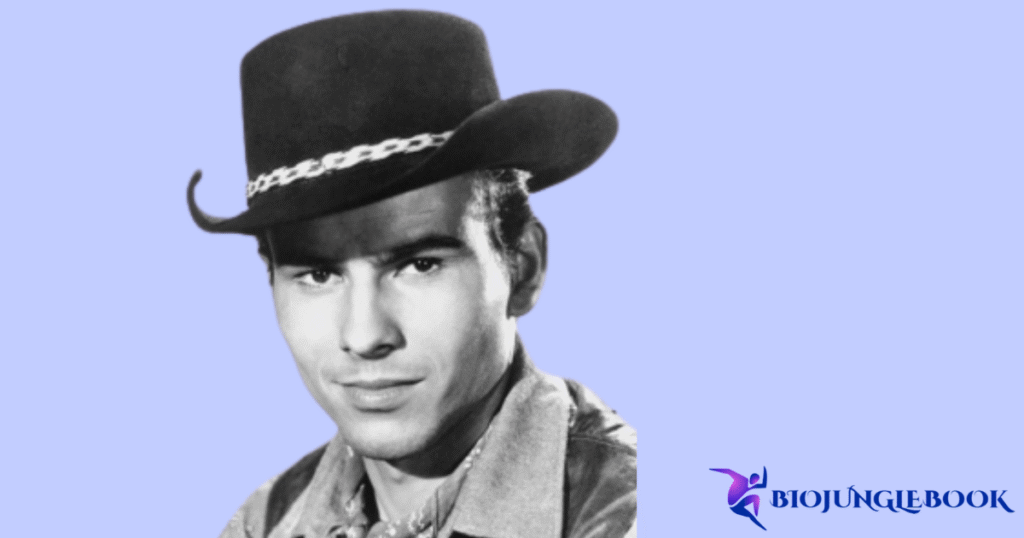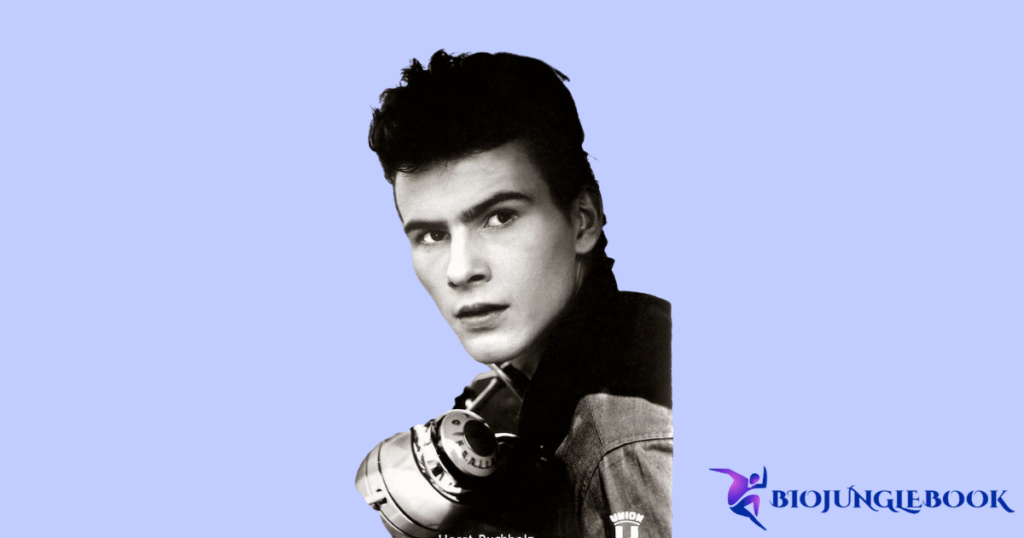Horst Buchholz, often celebrated as “the German James Dean,” was one of the most charismatic actors to emerge from postwar Europe. Known for his rebel charm and captivating screen presence, he made a lasting mark in both Hollywood and European cinema. With a career spanning more than five decades, he became internationally recognized through iconic roles in The Magnificent Seven (1960), One, Two, Three (1961), and the Oscar-winning Life Is Beautiful (1997).
Born in Berlin, Germany, Buchholz overcame a turbulent childhood shaped by World War II and pursued his passion for acting from a young age. His determination and natural talent propelled him from local theater stages to starring in over 60 feature films across the globe. His versatility, combined with fluency in six languages, made him a truly international figure in cinema.
Beyond the spotlight, Horst Buchholz became a cultural bridge between German film and Hollywood, representing an era when European actors began gaining worldwide recognition. His enduring performances, iconic style, and lasting influence continue to captivate film enthusiasts and secure his place as one of the most important German actors of the 20th century.
Bio/Wiki of Horst Buchholz:
| Category | Details |
|---|---|
| Full Name | Horst Werner Buchholz |
| Birth Date | December 4, 1933 |
| Birth Place | Berlin, Germany |
| Age at Death | 69 years (died March 3, 2003) |
| Height | 5′ 9½″ (1.77 m) |
| Weight | 75 kilograms (165 pounds) |
| Family Background | Son of Maria Hasenkamp; took surname of stepfather Hugo Buchholz, a shoemaker; had a half-sister Heidi |
| Relationship | Married French actress Myriam Bru (m. 1958 until his death 2003); two children |
| Nationality | German |
| Religion | Christian |
| Ethnicity | German (mother had Danish parents) |
| Body Measurements | 5′ 9½″ (1.77 m) height and 75 kilograms (165 pounds) weighs |
| Education | Left school early to pursue acting |
| Career | Actor from 1949 to 2002; stage, radio, film, and TV including Hollywood and European cinema |
| Achievements | Cannes Best Actor award; dubbed multiple languages; teen idol known as “German James Dean” |
| Notable Works | The Magnificent Seven (1960), One, Two, Three (1961), Life Is Beautiful (1997), Confessions of Felix Krull |
| Awards | Cannes Best Actor for “Sky Without Stars” |
| Legacy/Impact | Bridged German and international cinema; celebrated for charisma and versatility |
| Net Worth | $1.1 million USD |
Early Life of Horst Buchholz:
Horst Werner Buchholz was born on December 4, 1933, in Berlin, Germany, to Maria Hasenkamp. He never knew his biological father and later took the surname of his stepfather, Hugo Buchholz, a shoemaker. He also had a half-sister named Heidi. His early years were shaped by the turmoil of World War II, during which he was evacuated to a foster home in Czechoslovakia before returning to Berlin.
Growing up in postwar Berlin, Buchholz faced challenges but also discovered his passion for performance. Despite barely completing his schooling, he pursued the arts with relentless determination. By 1949, he was already appearing on stage productions and radio plays, which laid the foundation for his future career in film.
Also Read: shyheim-jenkins
Ambitious and driven, Horst made the bold move from East Berlin to West Berlin to chase greater opportunities. His multilingual abilities—speaking German, English, French, Spanish, Italian, and Russian—gave him a unique advantage, setting him apart from many of his peers and opening doors to an international acting career.

Full name/Real name:
Horst Werner Buchholz
Birth date/Birth place:
December 4, 1933/ Berlin, Germany
Family background:
Son of Maria Hasenkamp; took surname of stepfather Hugo Buchholz, a shoemaker; had a half-sister Heidi.
Career journey of Horst Buchholz:
Horst Buchholz’s breakthrough came in the mid-1950s when he starred in the drama Marianne of My Youth (1955) and the critically acclaimed Sky Without Stars (Himmel ohne Sterne), which earned him the Best Actor award at the Cannes Film Festival. His youthful charisma and rebellious image quickly earned him the title of “the German James Dean,” making him one of the most promising stars of postwar European cinema.
The peak years of Buchholz’s career arrived as he transitioned into Hollywood. His performance as Chico in The Magnificent Seven (1960) catapulted him to international fame, followed by his dynamic role in Billy Wilder’s comedy One, Two, Three (1961), where he showcased his versatility and comedic timing. During this period, Buchholz was sought after by both European and American filmmakers, solidifying his reputation as a truly global actor.
Also Read: holly-brougham
In later years, after turning down some pivotal Hollywood roles, Buchholz returned to European cinema and television, where he continued to prove his adaptability. His most notable late-career success came with Roberto Benigni’s Oscar-winning masterpiece Life Is Beautiful (1997), in which he played the sympathetic Dr. Lessing. This role reintroduced him to international audiences and highlighted the depth of his talent even in his later career.

Physical appearance of Horst Buchholz:
Age:
69 years (died March 3, 2003)
Height:
5′ 9½″ (1.77 m)
Weight:
75 kilograms (165 pounds)
Body measurement of Horst Buchholz::
5′ 9½″ (1.77 m) height and 75 kilograms (165 pounds) weighs
Major Achievements of Horst Buchholz:
One of Horst Buchholz’s greatest achievements was his ability to transition seamlessly between European cinema and Hollywood at a time when very few German actors managed to achieve such international recognition. His role in The Magnificent Seven (1960) made him a global star and ensured his place in film history alongside Hollywood legends like Yul Brynner and Steve McQueen.
Another highlight of his career was winning the Best Actor award at the Cannes Film Festival for his moving performance in Sky Without Stars (Himmel ohne Sterne). This honor not only elevated his reputation in Germany but also established him as a respected figure across Europe. His fluency in multiple languages further strengthened his career, allowing him to act and dub his own roles in different countries.
Also Read: jessenia-rebecca
Later in life, Buchholz achieved renewed acclaim with his performance as Dr. Lessing in Roberto Benigni’s Life Is Beautiful (1997), a film that went on to win three Academy Awards. This role reminded the world of his enduring talent and proved that even decades after his early stardom, he could still captivate audiences with his powerful screen presence.
Personal Life of Horst Buchholz:
Family:
Son of Maria Hasenkamp; took surname of stepfather Hugo Buchholz, a shoemaker; had a half-sister Heidi
Nationality:
German
Religion:
Christian
Ethnicity:
German (mother had Danish parents)
Marital status/Relationship:
Married French actress Myriam Bru (m. 1958 until his death 2003); two children
Net worth:
$1.1 million USD
Interesting facts about Horst Buchholz:
- Nicknamed “the German James Dean” for his rebellious charm and striking looks during the 1950s and 60s.
- He was fluent in six languages—German, English, French, Spanish, Italian, and Russian—and often dubbed his own roles.
- Turned down key Hollywood roles, which some critics believe slowed his career momentum in the 1960s.
- His bisexuality was revealed posthumously in a 2000 interview and later explored in a documentary by his son.
- He starred in over 60 films across five decades, from early European dramas to the Oscar-winning Life Is Beautiful.
Conclusion of Horst Buchholz:
Horst Buchholz remains one of the most influential German actors of the 20th century, remembered for his ability to bridge the gap between European cinema and Hollywood. From his breakthrough in postwar German films to his international success in The Magnificent Seven and One, Two, Three, he proved himself as a versatile and magnetic performer. His later appearance in Life Is Beautiful further cemented his timeless appeal.
What set Buchholz apart was not only his talent but also his charismatic personality and multilingual skills, which allowed him to cross cultural and linguistic barriers in the film industry. He became a symbol of German postwar artistry, showing the world that German actors could thrive on the global stage.
Though he passed away in 2003, Horst Buchholz’s legacy lives on through his films, his family, and the inspiration he left for future generations of actors. His story is one of resilience, talent, and lasting impact, ensuring he will always be remembered as “the German James Dean” and a cinematic icon.
FAQs of Horst Buchholz:
1. Who was Horst Buchholz?
Horst Buchholz was a renowned German actor, often called “the German James Dean,” best known for roles in The Magnificent Seven, One, Two, Three, and Life Is Beautiful.
2. What was Horst Buchholz famous for?
He gained international fame for his role as Chico in The Magnificent Seven and later appeared in the Oscar-winning Life Is Beautiful.
3. Did Horst Buchholz win any awards?
Yes, he won Best Actor at
4. Who was Horst Buchholz married to?
He was married to French actress Myriam Bru from 1958 until his death in 2003, and they had two children.
5. When did Horst Buchholz die?
Horst Buchholz died on March 3, 2003, in Berlin at the age of 69, due to pneumonia after hip surgery.



